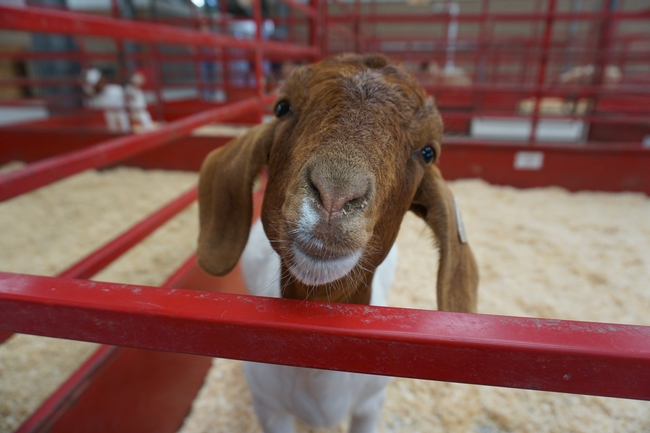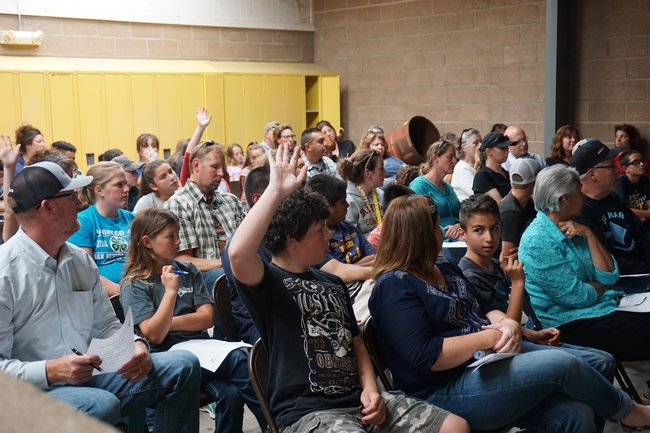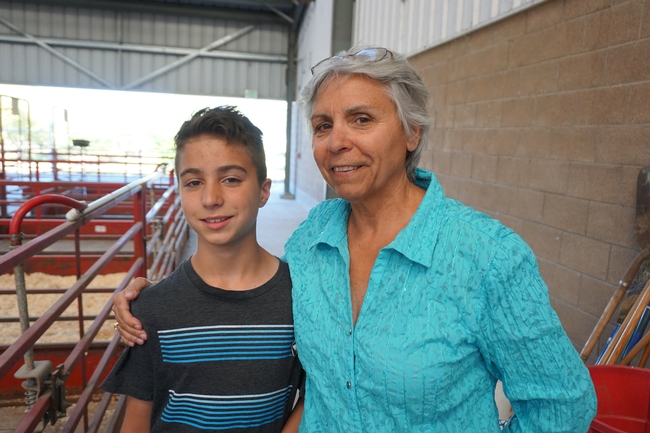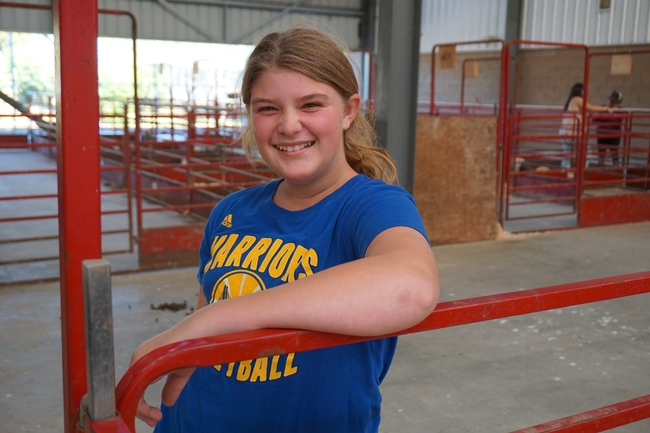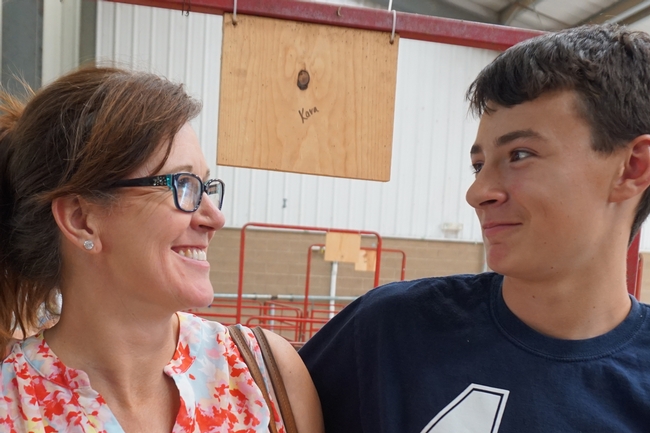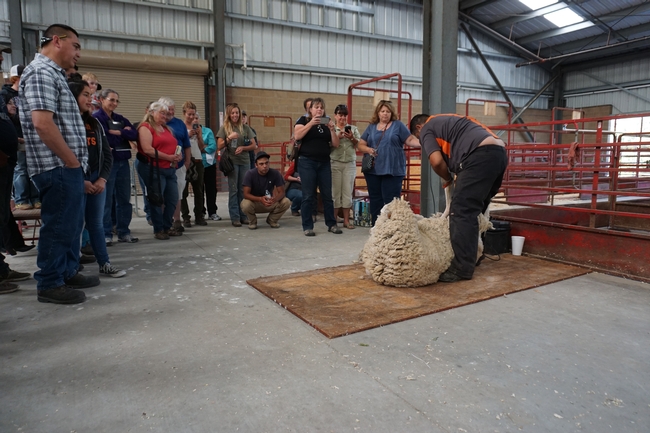Posts Tagged: goats
Raising sheep and goats for fun and profit
A 4-H sheep or goat project has something in common with ranchers raising animals for a living. In both cases, one objective is profit.
“Profit is not a dirty word,” said Dan Macon, UC Cooperative Extension assistant specialist in the UC Davis Department of Plant Sciences. “How many of you are using fair animals to save for college or buy a car? You're in business.”
Macon spoke at a Sheep and Goat Workshop June 13 for 4-H members, FFA students and local sheep and goat producers, organized by UC Cooperative Extension livestock and natural resources advisor Devii Rao. About 30 of the workshop participants represented the industry, 70 were young producers and family.
Macon discussed the direct and indirect costs of rearing animals, the optimal timing for breeding so lambs and kids will be weaned when grass is naturally abundant, and tactics for protecting sheep from predators.
“I call this, ‘Big dogs, hot fences and fast sheep,'” Macon said. “Someday I'm going to write a country song with that title.”
The big dogs are guardian animals that are not socialized to humans, but rather kept with sheep from the time they are tiny puppies. Donkeys and llamas can be effective guardians if the predators are coyotes and dogs.
UCCE advisor Roger Ingram covered the opportunity to manage rangeland with a flock of sheep or herd of goats. The concept is “targeted grazing.”
“Think of yourselves as grass and brush farmers with four-legged combines to harvest,” Ingram said.
He advised animal caregivers to learn to identify plants, as some are good for the animals, and some are not. For example, poison hemlock and milk weed are problem plants for certain animals.
Ten-year-old 4-H member Cody Watson attended the workshop with his grandmother Susan Gardner.
“Raising animals teaches responsibility and accountability,” Gardner said. “The kids learn where food comes from.”
Gardner was a 4-H member as a child, but when her children were growing up, she didn't have the income for property to house animals.
“It's fun,” Tobia said. “I'm there with all my friends.”
Goats can help with yellow starthistle control
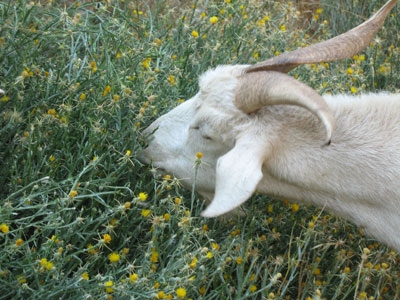
Yellow starthistle is thought to have been introduced into California from Chile during the Gold Rush. The weed readily took hold in California valleys and foothills, thriving in areas where the soil has been disturbed by animals grazing, road construction and wildland firebreaks. Today, yellow starthistle is a very common sight in vacant lots and fields, along roadsides and trails, in pastures and ranch lands, and in parks, open-space preserves and natural areas.
Capable of growing six feet tall and bearing flowers surrounded by inch-long spines, yellow starthistle reduces land value, prevents access to recreational areas, consumes groundwater and poisons horses. (Yellow starthistle isn't all bad. Beekeepers have found that it can provide an important late-season food source for bees.)
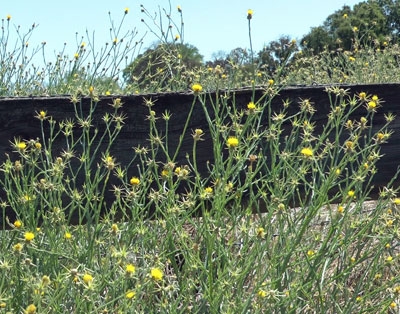
That's where goats can come in. Goats will eat yellow starthistle at all phases of growth, including the mature, spiny stage, when it is not palatable to other browsers and grazers.
"When goats eat yellow starthistle, they open up the canopy and allow sunlight to hit the ground," said Roger Ingram, UC Cooperative Extension natural resources advisor. "That allows other, more beneficial seeds to come up and grow. If you can get other plants growing in there, the competition will choke out yellow starthistle."
Landowners can raise goats themselves and direct them to areas of starthistle infestation with portable fencing, or they can lease the animals exclusively for vegetation control. More information on yellow starthistle management is available from the UC Integrated Pest Management Program.
View the video below for more information on goats' browsing preferences.
Read a transcript of the video.
GoatsYST
Goats can be green weed whackers
Interest in using goats to clear unwanted vegetation on rangeland is growing in popularity, according to UC Cooperative Extension livestock farm advisor Roger Ingram. In a Sacramento Bee story published today, Ingram confirmed writer Ramon Coronado's central thesis: Goats can be a green answer to wildfire prevention.
Coronado reported that more than 60 people attended a recent forum where Ingram discussed the pros and cons of using goats instead of machinery, chemicals and weed whackers.
The use of goats for weed abatement has drawbacks, however. Here are some of the concerns:
- Left unchecked, the animals can overgraze, leading to erosion and flash flooding
- The weeds targeted by goats are the first to grow back and the first to dry up and die, which could create more wildfire fuel
- The goats will produce CO2 during their munching and the trucks that deliver and move them around will also contribute to pollution
Ingram countered, according to the story, "You have to look at the big picture."

Goats on rangeland.
Transgenic goats cause a stir
Not surprisingly, a story in yesterday's Sacramento Bee about goats that have been genetically modified with human genes is generating comments on the newspaper's Web site.
The story was prompted by a UC Davis news service press release by Pat Bailey.
In short, UC Davis animal scientists James Murray and Elizabeth Maga engineered a small herd of dairy goats to produce high levels of a human antibiotic-like protein in their milk. Pigs fed milk from the transgenic goats had significantly lower levels of E. coli bacteria in their small intestines than those raised on regular goat's milk. The scientists feel the results mean the goat milk could one day be used to protect or cure people of diseases, especially in poor regions of the world.
Comments on the story ranged from outraged to indifferent to funny.
"Completely disturbing... on so many levels," said one.
"What's disturbing is the irrational fear," wrote another.
"It might be disturbing, but it sure explains a lot about my mother in law," commented a writer.
Those interested in learning the ins and outs of dairy goat production may wish to attend a workshop May 15 in Merced. UC Cooperative Extension farm advisor Deborah Giraud says the market for goat milk is growing due to increasing popularity of specialty goat milk cheese and yogurt. For all the details and registration information, click here.

Dairy goats.
